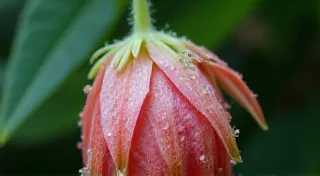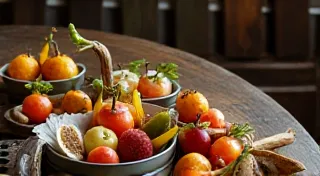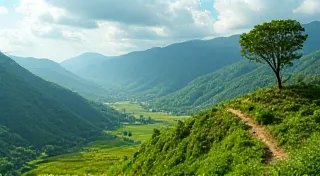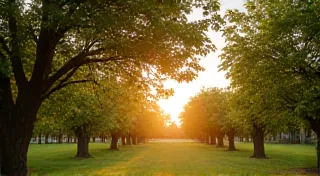The River’s Bounty: Integrating Orchards with Water Management Systems
There’s a certain melancholy beauty in antique accordions. The scent of aged wood and leather, the subtle patina on the keys – it speaks of gatherings past, of dances and celebrations held long ago. Each button, each reed, whispers stories of musicians who poured their hearts into those instruments. As a child, I remember my grandfather, a quiet man of the earth, coaxing these stories out of his old Hohner, the music weaving through the twilight air of our small farm. He understood the importance of respecting resources, of working *with* the land, not against it. It’s a lesson that resonates deeply, especially when considering the future of orchard management and our relationship with water.
My grandfather’s farm wasn’t vast, but he nurtured every inch of it. He understood that water wasn’t just a resource; it was lifeblood. He saw the river that bordered our property not as a barrier, but as an integrated part of our livelihood. Modern orchard practices often treat water as a commodity to be controlled, piped in and dispensed with calculated precision. While efficiency is vital, this disconnect from natural systems can have unintended consequences, both for the orchard’s health and for the surrounding ecosystem.

The Historical Context: Water and Orchards Through the Ages
Historically, orchardists have relied on natural water sources. Ancient Roman orchards were often planted near rivers and streams, utilizing flood irrigation techniques. While simple, this method fostered a symbiotic relationship – the orchard benefitted from the water, and the river’s banks were nourished by organic matter from fallen leaves and fruit. Medieval monks, renowned for their horticultural skills, also understood the importance of water management, developing sophisticated irrigation systems powered by gravity and often integrated with natural springs. The shift towards modern, centralized irrigation began with the advent of industrial pumps and piping, allowing for greater control but also increasing the potential for water depletion and runoff.
The early 20th century saw the rise of large-scale commercial orchards, often located in arid regions. While this brought abundant fruit to markets, it also led to the over-extraction of groundwater and the alteration of river flows. The focus shifted from working *with* water to conquering it. The resulting ecological damage has become increasingly evident, prompting a reassessment of our approach to orchard management. It’s a fascinating study of how practices evolve, sometimes departing significantly from traditional methods - a similar departure is explored in detail when considering the resurgence of heirloom fruit varieties, and the stories and folklore associated with them - a topic covered in "The Fruit’s Echo: Stories & Folklore from Around the World". Many of these varieties offer a fascinating exploration of flavor profiles, a subject beautifully mapped out in "The Cartographer's Seed: Mapping the Forgotten Flavors of Fruit".
Modern Challenges: Balancing Orchard Needs and Ecosystem Health
Today, the challenges are complex. Climate change is exacerbating water scarcity in many fruit-growing regions, while increasing demands for food production put further strain on resources. Traditional irrigation methods, while historically sustainable, can be inefficient in today's context, leading to significant water loss through evaporation and runoff. Furthermore, the fertilizers and pesticides used in conventional orchards can contaminate waterways, harming aquatic life and impacting downstream users. We’re not only battling environmental pressures but also societal shifts in tastes and preferences, and these often tie into the rich history of fruit and its place in culture.
The antique accordion, with its delicate mechanics and reliance on craftsmanship, offers a parallel. It needs careful maintenance, a nuanced understanding of its workings. Similarly, a sustainable orchard requires a holistic approach, recognizing the interconnectedness of the orchard, the soil, and the water source. Understanding the subtleties of fruit production requires a level of detail that echoes the meticulousness found in restoring an antique instrument – and sometimes, a deep dive into the past is needed to rediscover lost techniques and flavors.
Water-Efficient Irrigation Techniques
Fortunately, there are numerous techniques that can significantly reduce water consumption and promote ecosystem health. Drip irrigation, for example, delivers water directly to the roots, minimizing evaporation and reducing water waste. Mulching helps retain moisture in the soil, reducing the need for frequent watering. Soil moisture sensors can provide real-time data on soil conditions, allowing for more precise irrigation scheduling. Furthermore, selecting drought-tolerant fruit varieties can dramatically reduce water requirements. The effort to understand the nuances of fruit cultivation, from soil conditions to pest control, extends beyond the purely technical – it’s a conversation that requires us to consider the broader ecological context and the long-term implications of our choices.
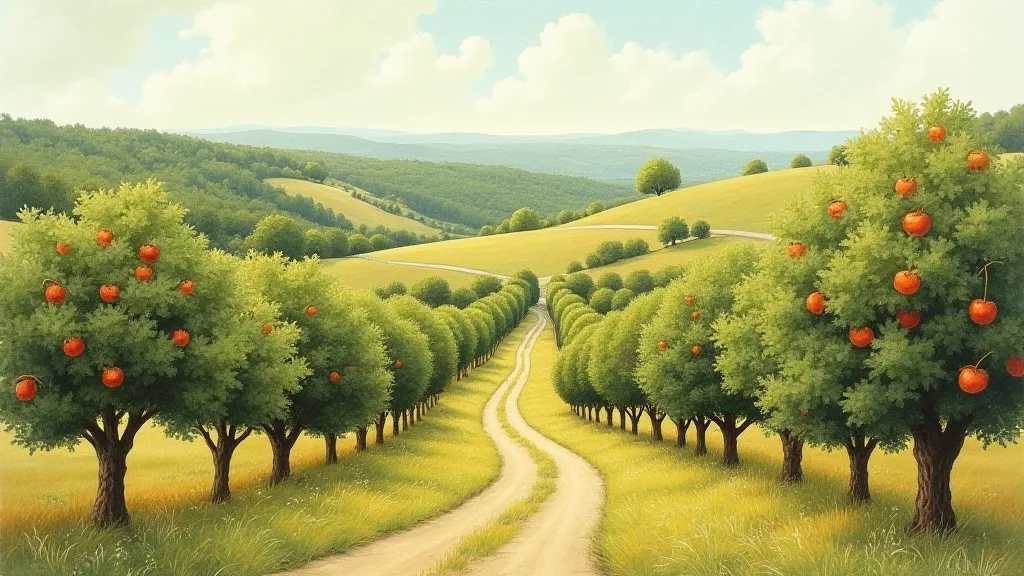
Integrating Orchards with Natural Waterways: A Symbiotic Approach
The real key to sustainable orchard management lies in integrating the orchard with natural waterways. This involves creating buffer zones along riverbanks, allowing vegetation to filter runoff and provide habitat for wildlife. Constructed wetlands can be used to treat wastewater before it’s discharged back into the river. Riparian planting – planting trees and shrubs along the riverbank – helps stabilize the soil, prevents erosion, and provides shade, which can reduce water temperatures. Often, these strategies also contribute to a greater appreciation for the heritage and unique qualities of different fruit varieties – a theme explored further in "The Cartographer's Seed: Mapping the Forgotten Flavors of Fruit".
My grandfather’s accordion always had a few quirks. A sticky key here, a slightly out-of-tune reed there. It wasn't perfect, but it *lived*. It resonated with the environment around it. Similarly, an orchard integrated with natural waterways shouldn’t strive for sterile perfection. It should be a vibrant ecosystem, supporting a diversity of life. The intricacies of pest management, for instance, often demand a move away from broad-spectrum pesticides and towards more targeted, holistic solutions – a principle that underscores the interconnectedness of orchard health, water quality, and biodiversity.
The Craftsmanship Connection: A Return to Holistic Principles
The craftsmanship evident in antique accordions – the meticulous assembly of each reed, the careful shaping of the wood – reflects a deep respect for materials and a commitment to quality. This same philosophy should guide our approach to orchard management. Moving away from a purely extractive mindset and embracing a more holistic perspective, we can create orchards that are both productive and environmentally responsible. It requires a willingness to learn from the past, to rediscover traditional practices that have been lost or forgotten, and to adapt them to the challenges of the modern world. The rewards are not just economic – they are also environmental and cultural.
Consider the resurgence of interest in heirloom varieties – fruit varieties that were once commonplace but have been largely replaced by modern cultivars. These older varieties often possess unique flavor profiles and require less intensive care. Similarly, restoring degraded riparian zones and promoting biodiversity in and around the orchard can create a more resilient and sustainable system. Managing these diverse ecosystems successfully demands a deep understanding of the complex interactions between plants, animals, and the environment – and it also requires a constant vigilance against emerging threats, such as pests and diseases.

Looking Ahead: A Future of Sustainable Orcharding
The future of orchard management hinges on our ability to reconnect with the principles that guided our ancestors – a respect for natural resources, a commitment to craftsmanship, and a recognition of the interconnectedness of all living things. Integrating orchards with water management systems is not just a technical challenge; it’s a philosophical shift, a return to a more harmonious relationship with the earth. It’s about recognizing that the health of our orchards is inextricably linked to the health of the rivers that sustain them. It's about appreciating the quiet music of the land, just as my grandfather taught me to appreciate the music of his antique accordion. Often, this necessitates adapting traditional methods to meet contemporary challenges, ensuring that our orchards remain productive and resilient for generations to come. Furthermore, maintaining healthy orchards requires ongoing assessment and adaptation, much like the careful tuning and maintenance needed to keep an antique accordion playing beautifully. And sometimes, the most effective solutions require a shift in perspective, looking beyond the immediate concerns of production and considering the broader ecological and cultural context - an approach crucial for overcoming common pest and disease challenges, as outlined in "The Fruit’s Shadow: Addressing Common Pests & Diseases".
